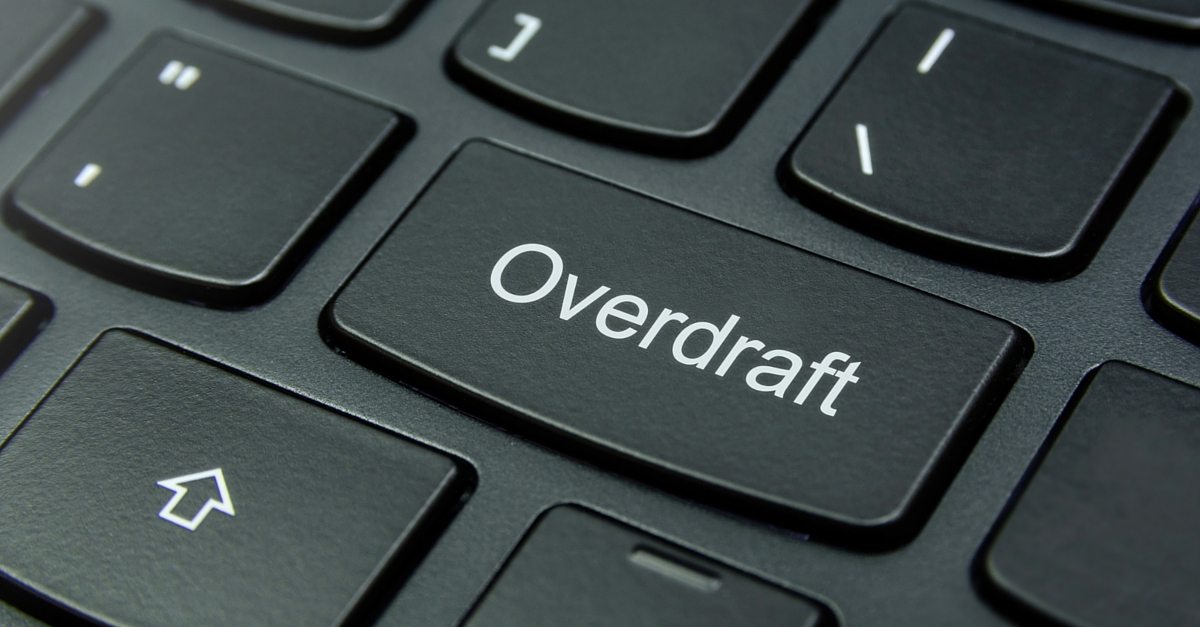
Overdraft protection seems like a good idea. You pay a service fee to cover you for the unfortunate time or two, that your bank account is temporarily short of funds, avoiding costly returned or NSF cheque charges and the embarrassment of having your payment bounce. According to one big Canadian bank, “it helps you manage your finances by allowing you to complete a transaction.” But does it do that – manage your finances?
Table of Contents
Overdraft protection plans & fees
Most banks offer two types of overdraft plans: pay-as-you-go or a monthly fee.
Under the pay-as-you-go model, you pay a daily fee for each day you are in overdraft (usually $5) plus interest on the amount of the overdraft (usually at a rate of around 21% per annum). If you think you are going to habitually need overdraft protection, you could opt for a monthly plan (usually $4 a month) plus interest on the overdraft balance (again usually at around 21% per annum).
This all sounds good. Even under the pay-as-you-go model you are trading a $5 charge (plus interest) for a guaranteed $48 NSF cheque charge.
Beware other triggers
Here’s where things get a bit sticky. The daily charge on the pay per use model is charged based on your end of day balance. If other charges drive your balance further into the negative, you will be charged $5 again. This includes items like month-end service charges and interest. So if you leave your overdraft balance for more than a month, expect another $5 charge in addition to the ongoing interest costs. If you have another cheque or automatic payment go through before payday, expect another $5 charge.
Better than payday loans but more than a credit card advance
Payday loans are notorious for charging exorbitant interest costs. As of 2018, in Ontario most payday loans cost $15 per $100 borrowed. If you borrow $300 from a payday loan lender your cost over two weeks is $60. Use a bank overdraft of that amount, once, for 2 weeks and your cost is thankfully much lower: ($300 + $5) x 21% / 365 * 21 days = $3.71 interest + $5 fee = $8.71, making the overdraft better than a payday loan.
However, what happens if all you do is go over by $10? You still have to pay the $5 which is 50% of your borrowings for one day!
Given that most credit cards charge 21% on cash advances, without an additional $5 fee, taking the $300 payment from your credit card may be a slightly better option, as long as you put funds against your credit card balance as soon as you can.
Avoid the need for overdraft protection
If what you are looking for is better ways to manage your finances, find solutions that will help you avoid the need for overdraft protection to begin with. Here are some tips to reduce your reliance on bank overdrafts:
- Keep a minimum balance in your chequing account if you can. Keeping a minimum of two months’ worth of bill payments in your chequing account can provide all the cushion you need in the event of a missed paycheque or added expense. It may be possible to build a small slush fund even if you have debt obligations.
- Keep track of all cheques and automatic payments and transfer money from your savings account to cover any payments as needed. With on-line banking and phone apps, it’s relatively easy to check your balance daily. If you know how much you have in your account, and what cheques you’ve written, you should not have any accidental overdrafts.
- If cash flow is the problem, consider using a line of credit (the interest rates are usually much lower) and work towards balancing your budget.
- If you are carrying an overdraft balance today, it’s time to deal with it. Consider opening a new chequing account at a different bank, then paying off your old overdraft account like any other outstanding debt. We recommend opening an account at a new bank if you think you may have other debt problems to avoid having the bank transferring funds through any right of offset.
- Reduce your overdraft limit. If you don’t have access to this extra ‘resource’ you won’t use it.
Overdraft protection is not for your convenience. It’s a way for the banks to loan you more money.
Overdrafts are debts that can be eliminated in a bankruptcy or consumer proposal along with credit card debt, payday loans and other unsecured debts. If you are constantly going into overdraft because you have too much debt, contact us today for a free consultation.






